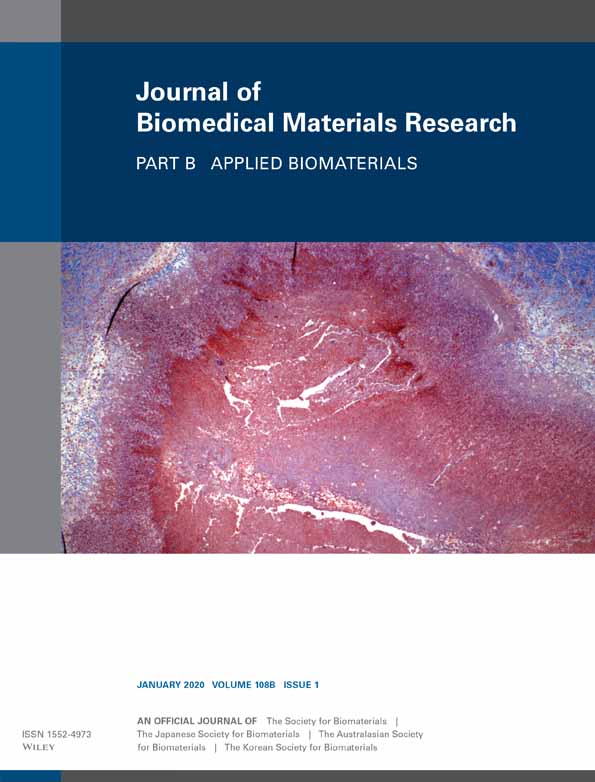The optimization of sintering treatment on bovine-derived bone grafts for bone regeneration: in vitro and in vivo evaluation
Abstract
Modifications of sintering temperature and treatment time of bovine-derived bone grafts affect their physicochemical properties and further influence biological activity. Three different temperature sintered bovine-derived bone grafts: group I (300 °C 3 h), group II (300 °C 3 h plus 530 °C 6 h), and group III (300 °C 3 h plus 1000 °C 2 h) and Bio-Oss® were characterized and then compared in vitro for their effects on bone marrow stromal cells (BMSCs) migration, proliferation, and differentiation as estimated by cell migration assay, Alkaline phosphatase (ALP) activity assay, and Alizarin red staining. Further, the four bone grafts were implanted into the calvarial defects of rabbits to evaluate bone regeneration and graft degradation. The four deproteinized bovine-derived bone grafts displayed different surface topography. Group II displayed the highest potential of attracting cells. Both groups I and II markedly promote BMSCs differentiation. After 6 and 12 weeks, defects grafted with groups I and II displayed a significant higher bone fraction than defects grafted with group III and Bio-Oss®. Bone graft remnants remained in all four groups. Taken together, sintering at 300 °C for 3 h and sintering at 300 °C for 3 h with an addition of 530 °C for 6 h of bovine-dervied bone grafts displayed potential use in bone regeneration. © 2019 Wiley Periodicals, Inc. J Biomed Mater Res Part B: Appl Biomater 108B:272–281, 2020.
CONFLICT OF INTEREST
The authors declare no conflict of interest.




